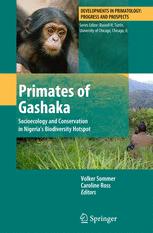

Most ebook files are in PDF format, so you can easily read them using various software such as Foxit Reader or directly on the Google Chrome browser.
Some ebook files are released by publishers in other formats such as .awz, .mobi, .epub, .fb2, etc. You may need to install specific software to read these formats on mobile/PC, such as Calibre.
Please read the tutorial at this link: https://ebookbell.com/faq
We offer FREE conversion to the popular formats you request; however, this may take some time. Therefore, right after payment, please email us, and we will try to provide the service as quickly as possible.
For some exceptional file formats or broken links (if any), please refrain from opening any disputes. Instead, email us first, and we will try to assist within a maximum of 6 hours.
EbookBell Team

4.4
72 reviewsThe remote Gashaka region of north-eastern Nigeria is still largely unexplored. In this premier wilderness, monkeys and apes survive in large numbers – part of a rich assemblage of wildlife at the interface between the dry sub-Saharan Guinea savannah and the moist Cameroonian highlands.
Primates include the rarest chimpanzee subspecies, colobus, guenons and baboons, which thrive here despite the wet climate. The main ethnic groups – Fulani cattle herders and Hausa speaking subsistence farmers – still follow age-old traditions. Conservation challenges comprise settlements in protected areas, deforestation, annual fires, livestock grazing and hunting.
Primates of Gashaka provides first-hand research accounts in conjunction with the Gashaka Primate Project, founded in 2000. Topics covers primate socioecology; genetics and phylogeography; nutritional ecology; vocal communication and cognition; ethno-botany and ethno-primatology; human subsistence strategies and conflicts with wildlife; as well as habitat surveys assessing success and failure of conservation approaches. The contributions aim for interdisciplinarity and comparative dimensions, across species and the African continent.
This pioneering volume about one of the least known iconic primate habitats is of interest to primatologists, anthropologists, policy-makers and conservationists alike.